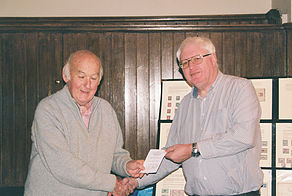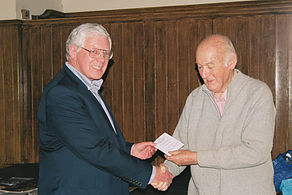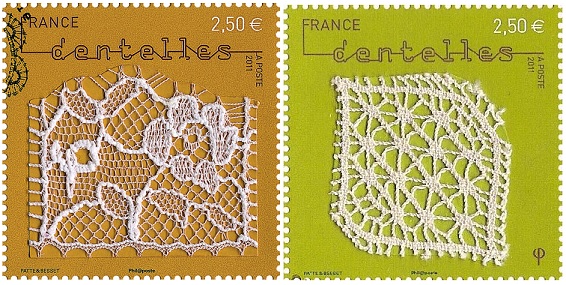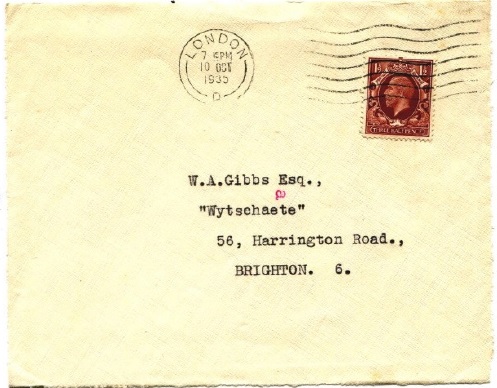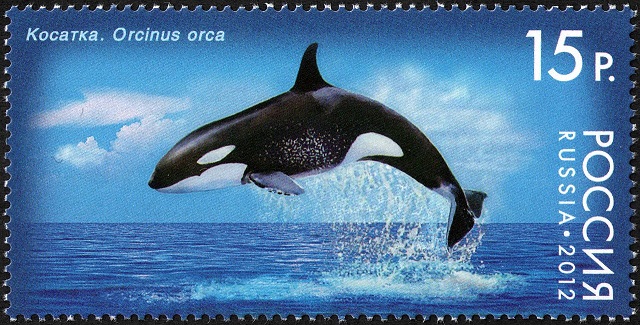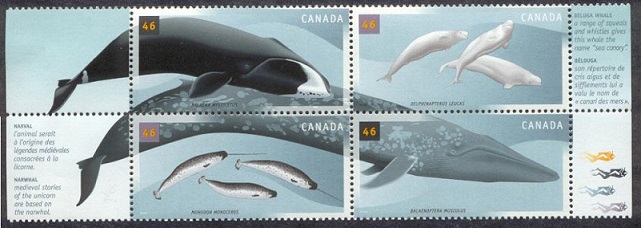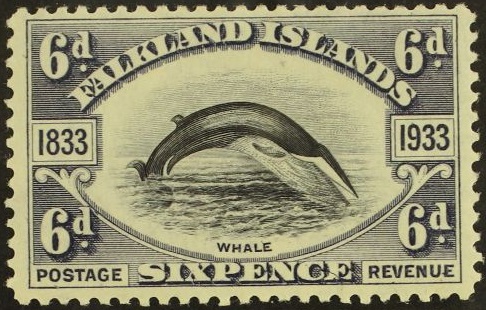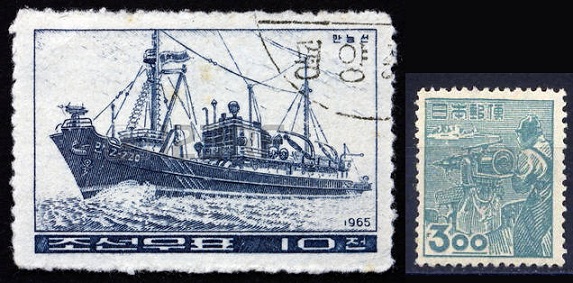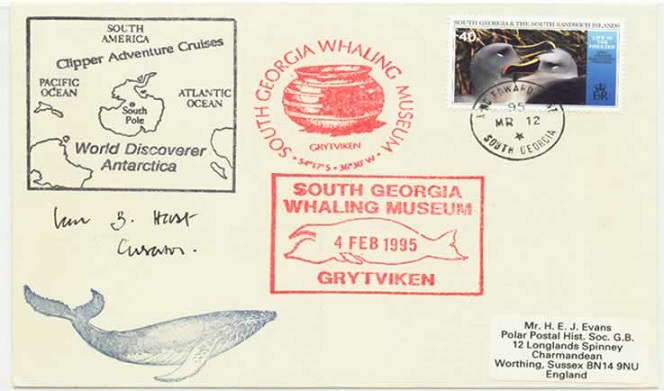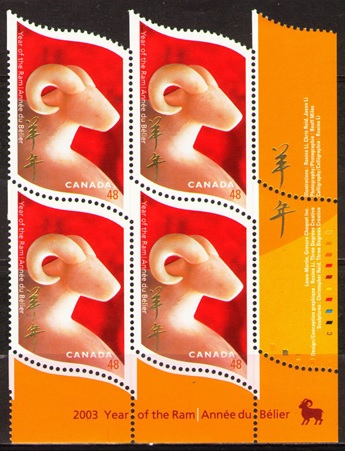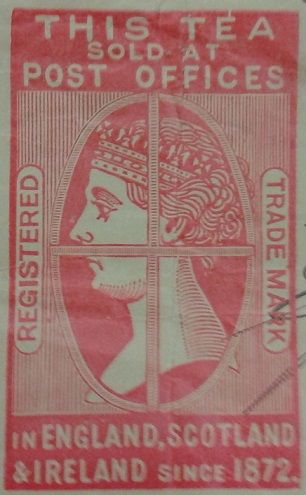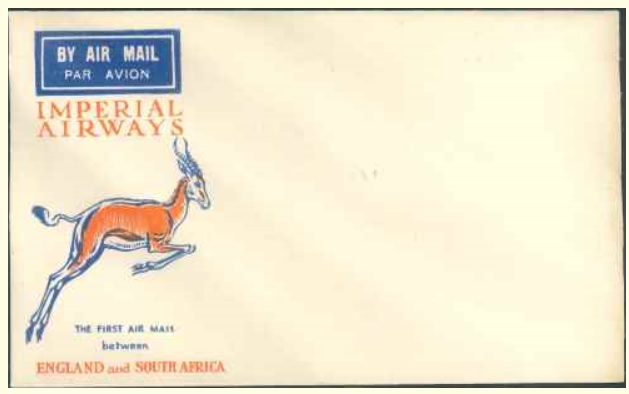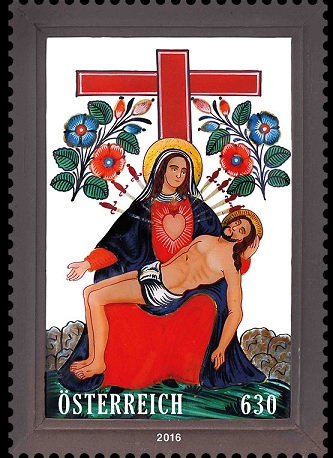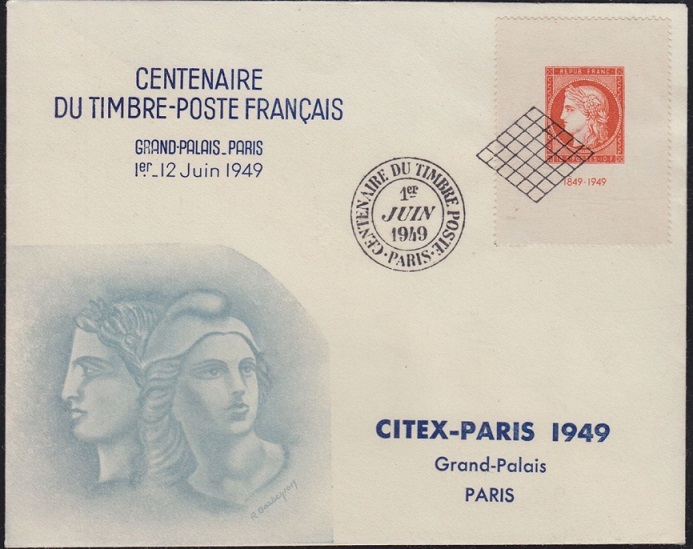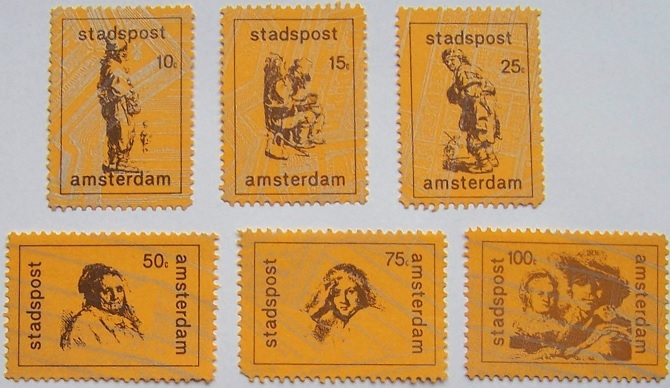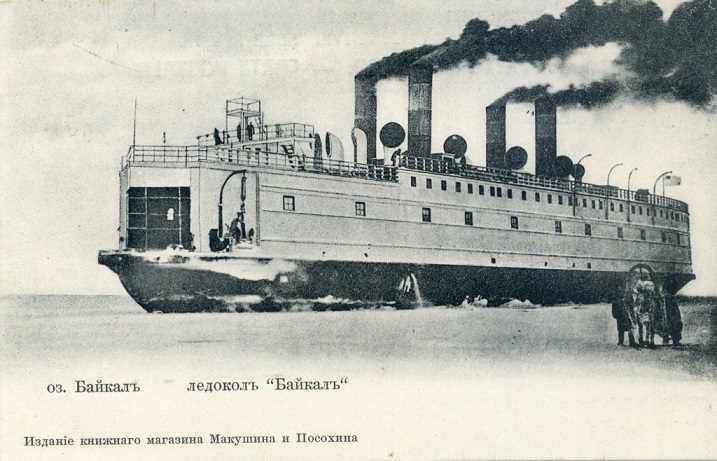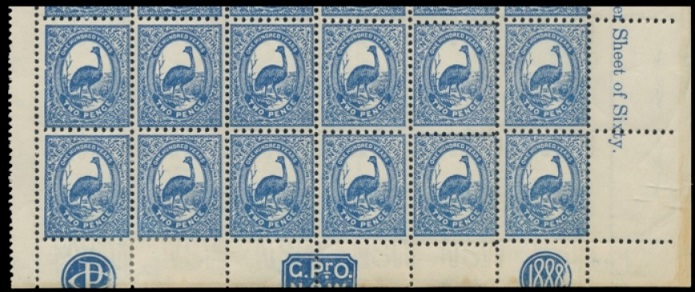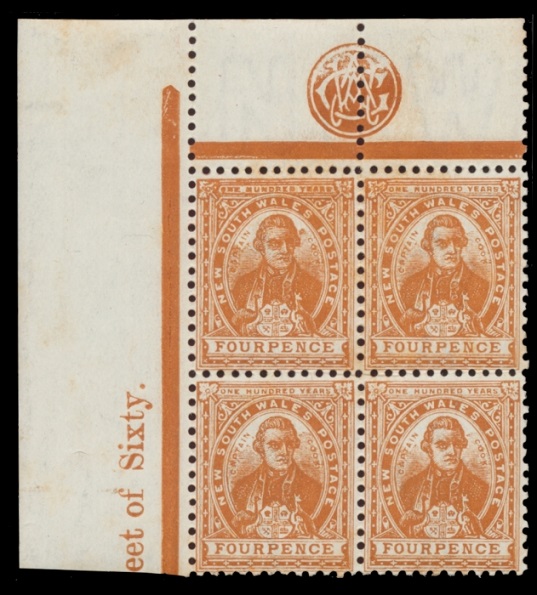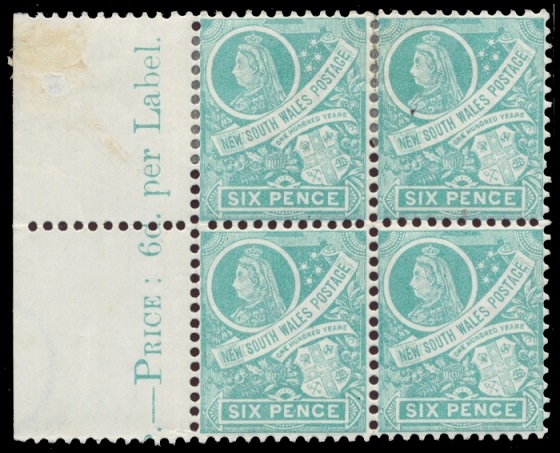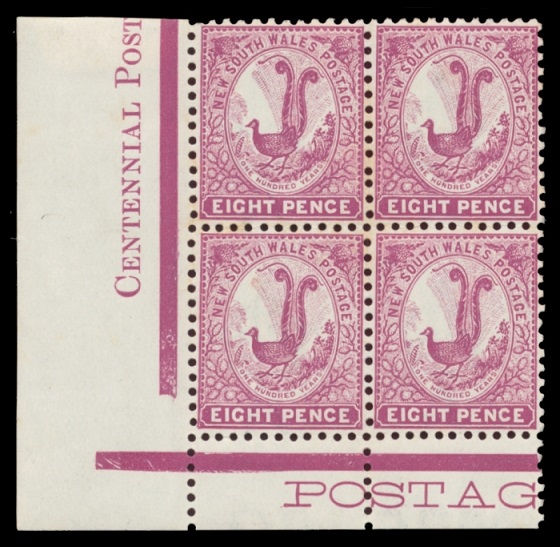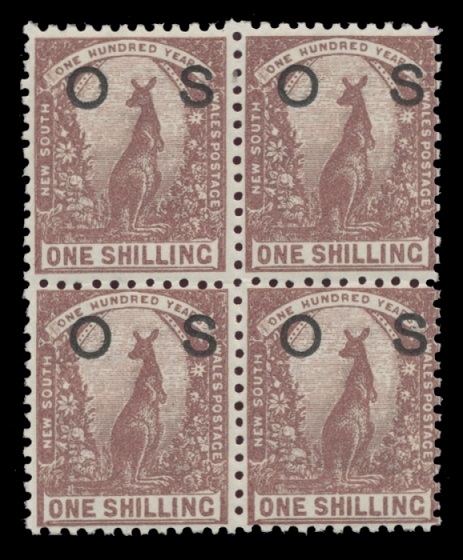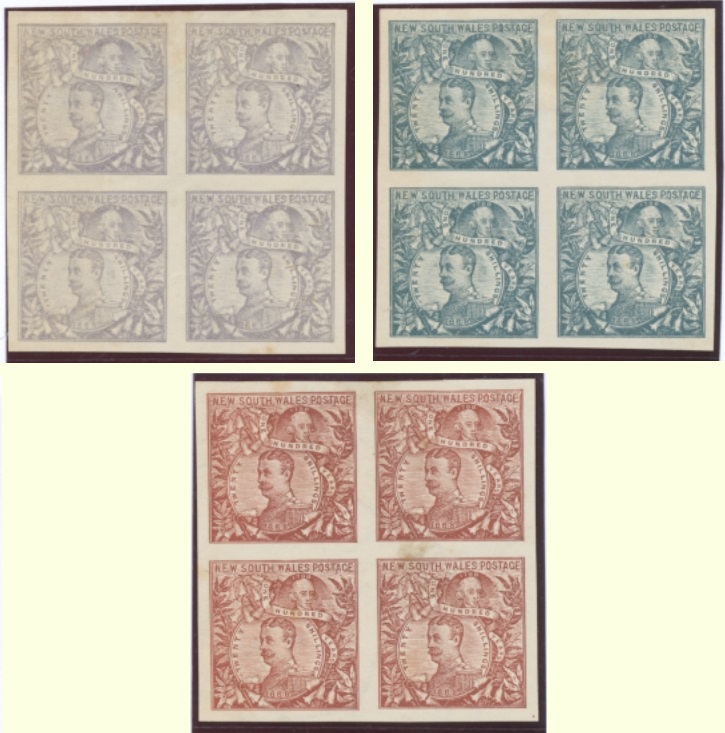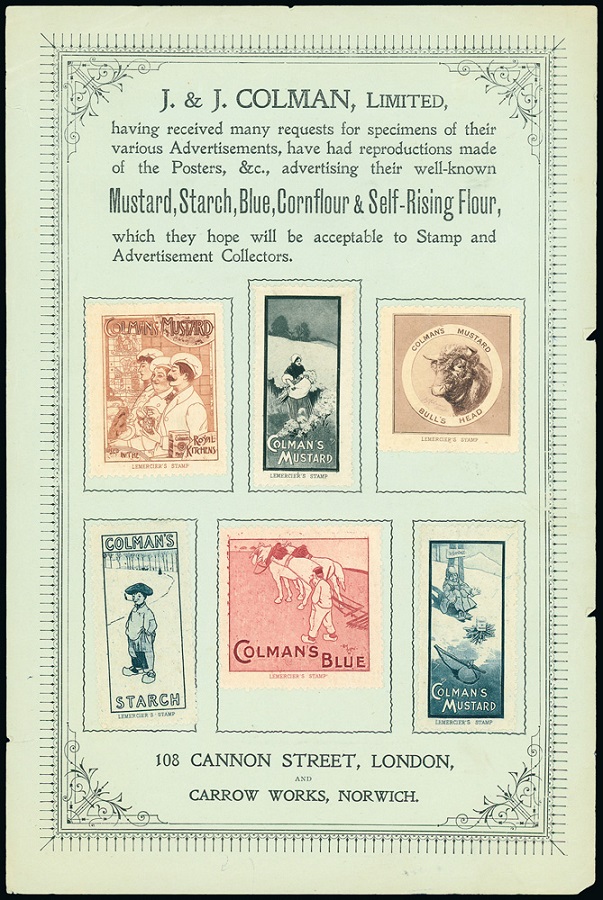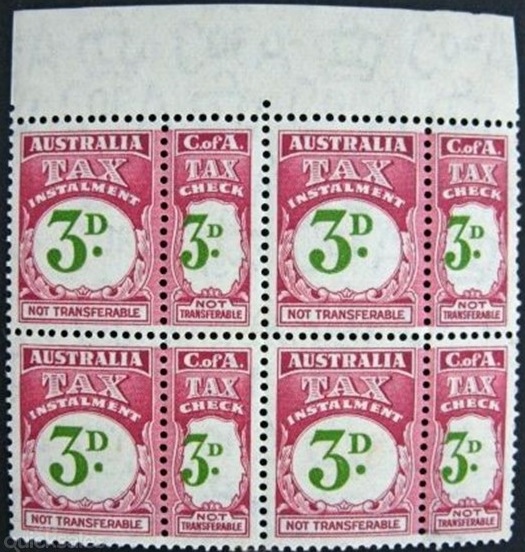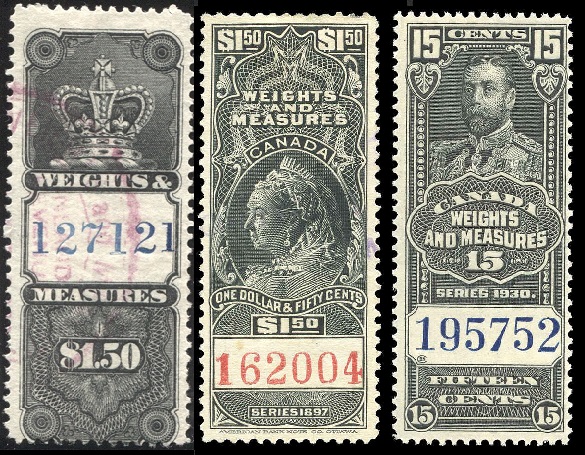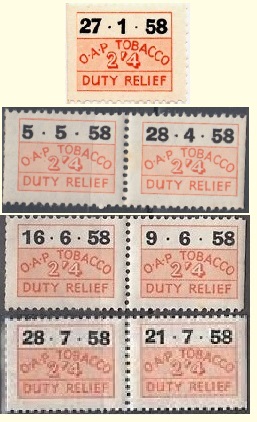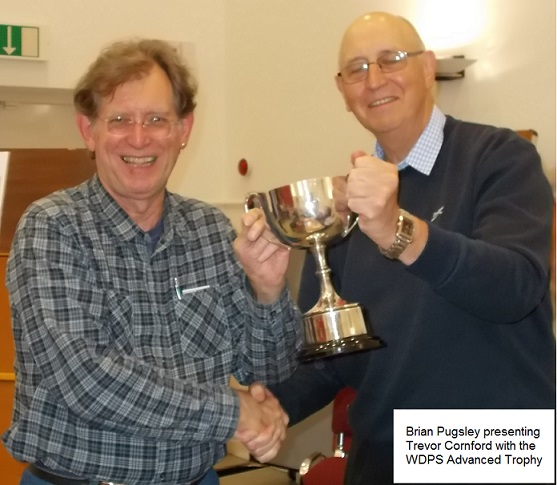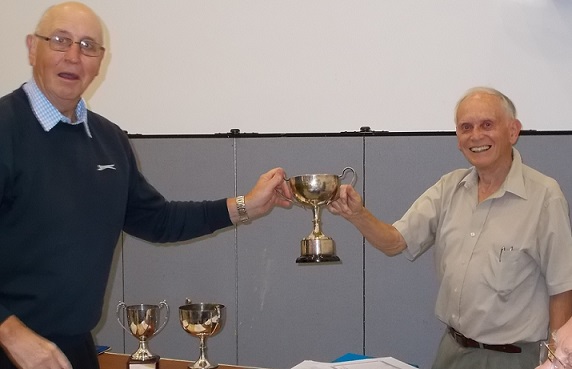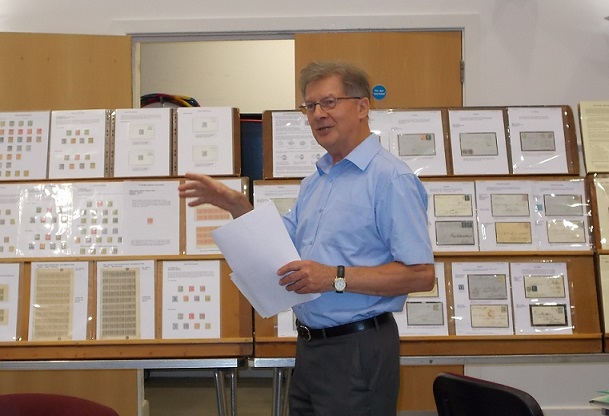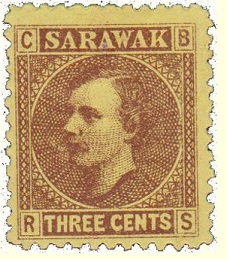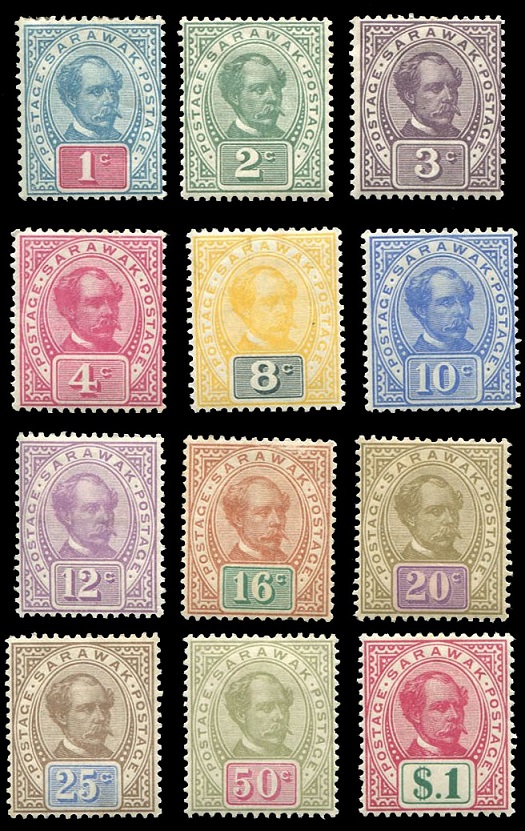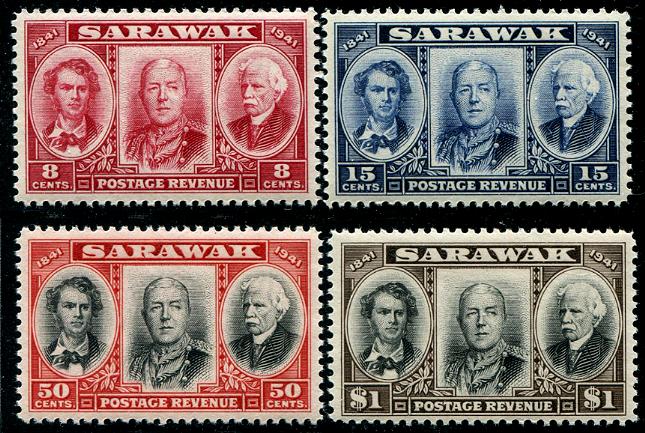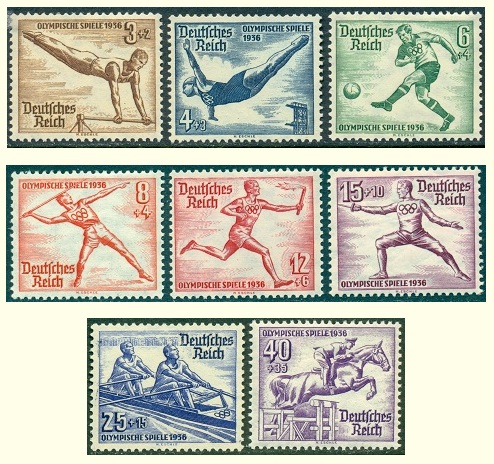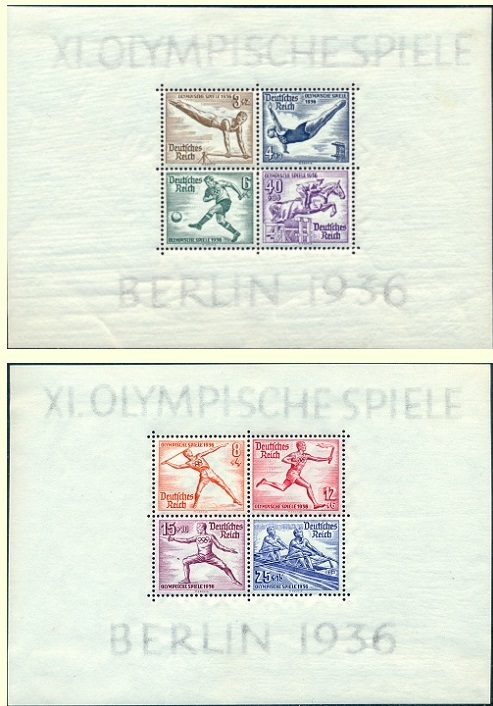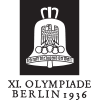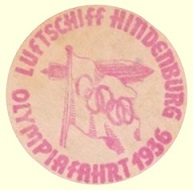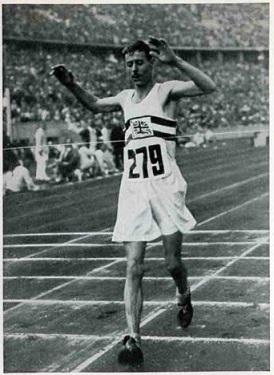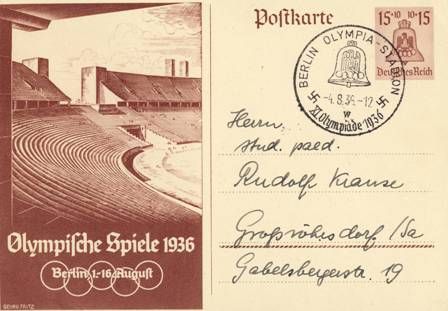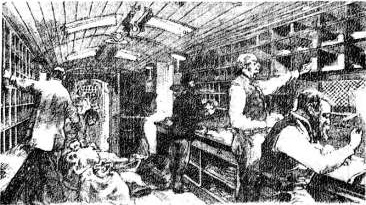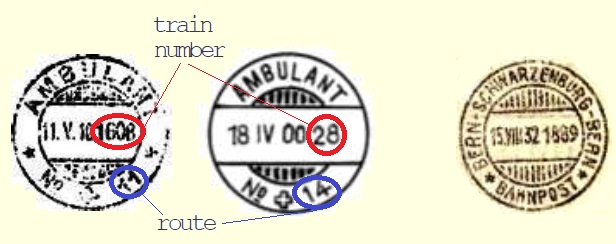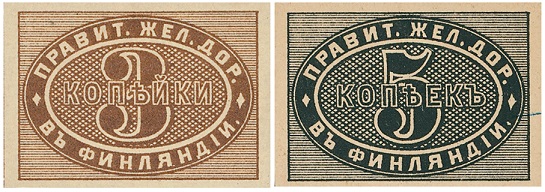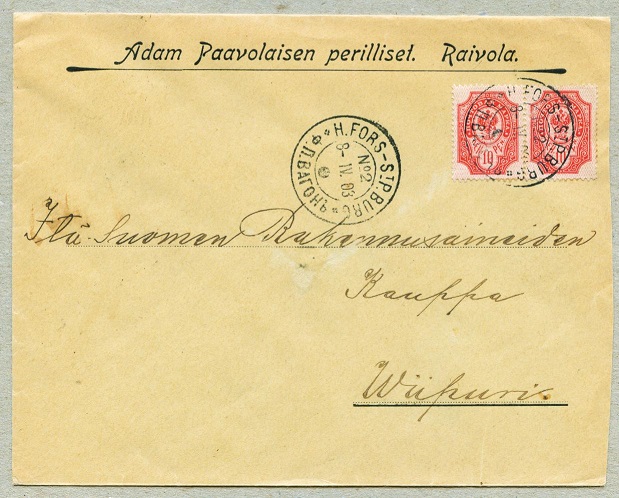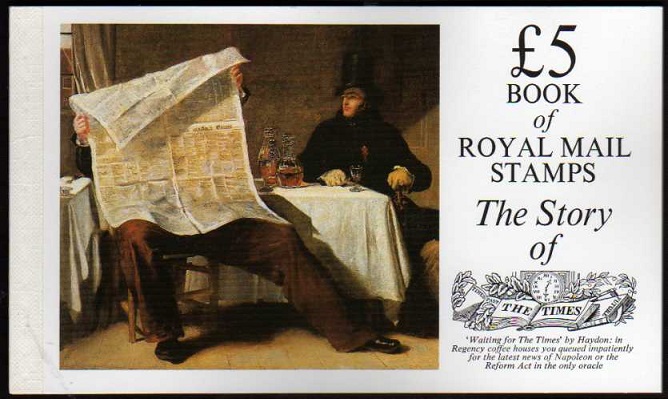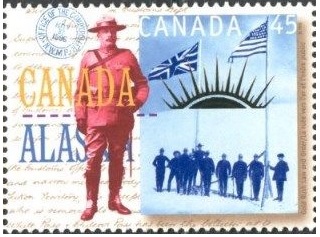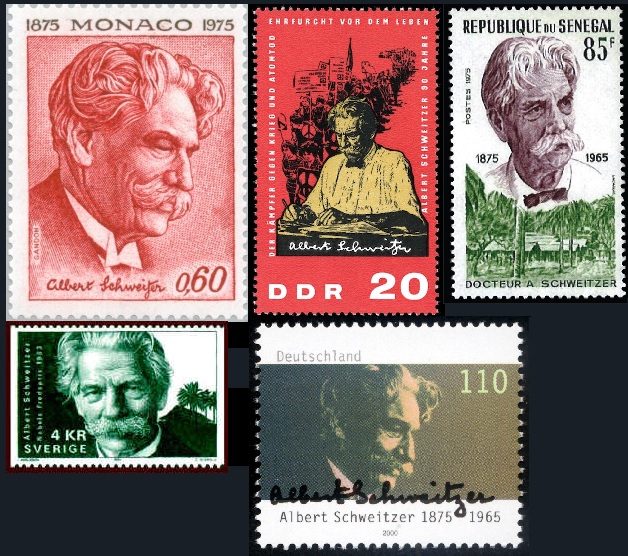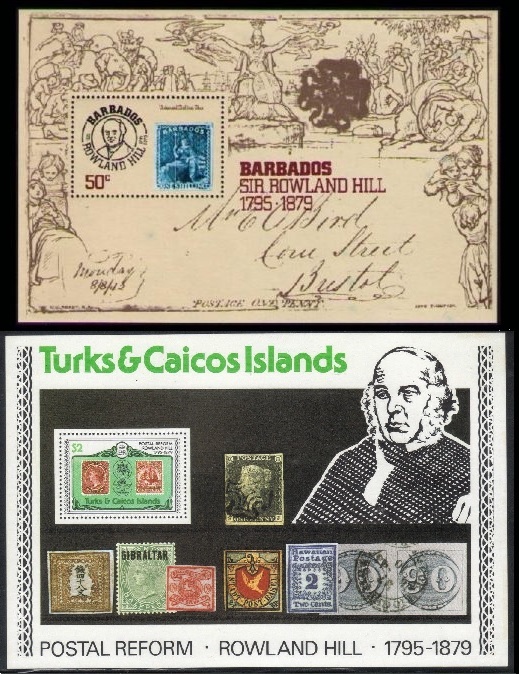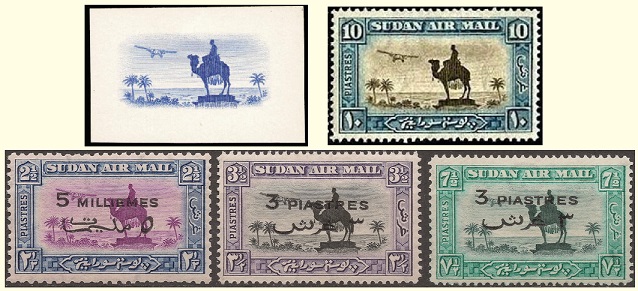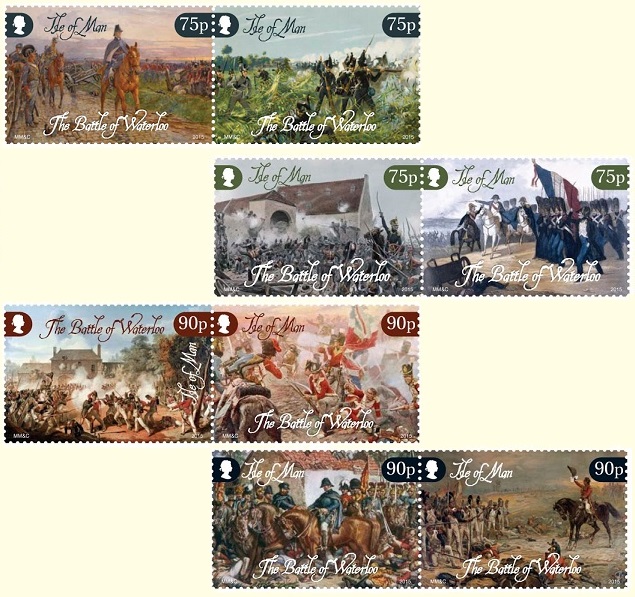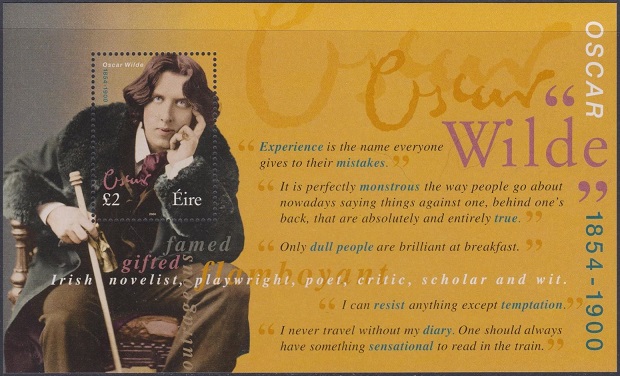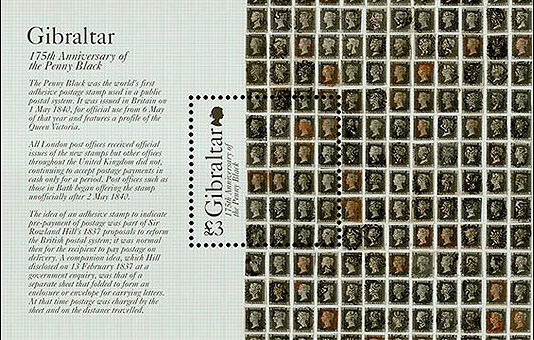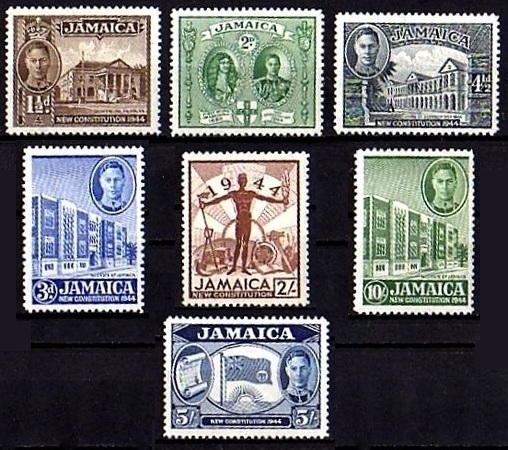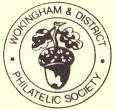
News Archive: 2016 |
|
13th December 2016 - Seasonal Displays and Christmas Buffet
Members presented material relating to Christmas, and enjoyed a buffet.
15th November 2016 - The WDPS visits the Maidenhead & District Philatelic Society
On behalf of the Wokingham & District Philatelic Society, Mark Bailey and Alwyn Lowe accepted an invitation from the Maidenhead & District Philatelic Society to display at their meeting.
25th October 2016 - The Items Speak For Themselves
A select group of members attended to see members presenting material in a "Silent Display". The following members displayed material without any spoken word of explanation:
Both showings, before and after the refreshment break, attracted questions from the audience. Mark Bailey thanked all who had come and brought such a diverse range of material. 11th October 2016 - Postal Mechanisation for Philatelists - Alastair Nixon
The Chairman and the 23 attendees gave Alastair a warm welcome as a long-standing member of the WDPS. Alastair reflected that his interest in postal mechanisation started in the early 1960s but grew significantly when he became a member of the Postal Mechanisation Study Circle in the late 1980s. That enabled him to understand the coding dot markings that could be found on envelopes at that time. Alastair recognises that the topic of postal mechanisation is one that is often overlooked by philatelists - possibly because of the complex nature of the subject. This view was perhaps reflected in an article that once appeared in a philatelic magazine, describing the topic as "a side-line collection of postal history that has no significance"! In his introduction, Alastair made available a hand-out to help the understanding of the various phases of mechanisation development that have taken place over the years within the GPO and Royal Mail.
The first half of the display detailed the "mainstream" developments that took place in the UK and covered the following 8 phases of development: Phase 1: 1935 - Sorting machines based on memorised codes Phase 2: 1957 - Automatic letter facing and cancelling Phase 3: 1959 - Initial phosphor dot coding based on postcodes Phase 4: 1968 - First Generation sorting machinery Phase 5: 1975 - Second Generation sorting machinery Phase 6: 1983 - Optical Character Recognition & Ink Jet Printing technology Phase 7: 1987 - Third Generation sorting machinery Phase 8: 1995 - Advanced technology sorting equipment
The second half covered "peripheral" aspects of postal mechanisation, divided into the following 6 sections: Section 1: The early cancelling machines Section 2: Royal Mail vehicles Section 3: Postcode publicity Section 4: Postal mechanisation on British stamps Section 5: Postal mechanisation trials Section 6: Coding marks
At a few points in his display, Alastair showed the results of some analysis that he had carried out on live mail and thanked all those people who had helped with this by saving their unwanted envelopes for him! The Chairman thanked Alastair for giving a fascinating display, and remarked on the enthusiasm shown for the topic. For those members who were unable to attend the evening or who wish to study the information, Alastair has uploaded scans of the whole display to his UK Meter Franking web site. This can be found at http://www.meterfranking.co.uk/postalmech.htm. 27th September 2016 - The WDPS visits the Croydon Philatelic Society
On behalf of the Wokingham & District Philatelic Society, Eric Holmes and Alwyn Lowe accepted an invitation from the Croydon Philatelic Society to display at their meeting.
27th September 2016 - A Whale's Tale - Lesley Marley
The Society was honoured to see the award-winning exhibit entitled "A Whale's Tale". Lesley Marely was part of the UK team that won the Seven Nations Challenge in 2015 (against philatelic exhibits from Australia, Belgium, Denmark, Germany, Sweden, and the USA) and she is the first person from the UK to have won a Large Gold Medal for a Thematic Philately exhibit.
A piece of baleen (used for filtering out krill) was passed around. This was used as "whalebone" for stiffening corsets. To give an idea of the size of whales, a sperm whale tooth was also handed round.
The bowhead whale was the first to be hunted in numbers. The main reason for hunting was to extract Whale Oil. It was noted that larger whales feed around the Antarctic Ice Shelf. However whales are not confined to Polar regions, and an ancient valley with many whale skeletons has recently been discovered in Egypt. It is a World Heritage Site.
It was noted that it was not until the 1970s that people really knew what whales look like. There are many fanciful depictions in older documents.
The Narwhal, that grows one or more long spiral tusks, gave rise to the legend of the unicorn.
The second part of Lesley's display included a 1774 Royal Proclamation from Stockholm, which allowed the hunting of whales of Greenland and in the Davis Strait.
Records show the whaling voyages were very long, with the sailors often being away for two years or more. Whalers that met on the high seas would often exchange mails as well as information about the location of whales.
Originally whales were processed on land, but the development of "Factory Ships" allowed the hunting of greater numbers and processing while the fleet was still at sea.
The expansion of whaling led to a huge decline in the population of whales, and eventually measures were taken to restrict catches and ban whaling. As a result, the world whale populations are now slowly recovering, and whales are seen as a tourist attraction rather than a resource to be exploited.
The story was supported by a wide range of philatelic materials, suitably tied to the subject matter, as one would expect in a Large Gold Medal exhibit. In her Epilogue, Lesley hopes that the Save the Whale Campaign will in the course of time persuade all Nations to cease the killing of Whales for whatever reason.
Giving the vote of thanks, Patrick Reid thanked Lesley for coming up from Hayling Island to share her excellent material with us. She had educated us about the subject and shown how Thematic Philately should be done. 13th September 2016 - The Colour Orange The displays commenced with Mark Bailey, who opened by giving a definition of the colour orange as any of a group of colours that lie between red and yellow in the visible spectrum in the approximate wavelength range 620-585 nanometres. Mark explained that before the English-speaking world was exposed to orange fruits, the colour was referred to as "yellow-red" (geoluraed in Old English) or "red-yellow".
Mark's display included an Oranje Vrijstaat 1884 1 penny Orange Tree postal card and a bilingual pair of South Africa 6d Orange Tree stamps, as well as orange-coloured Midland Railway's stamps of the type introduced in 1855, the 1887-1900 half penny Queen Victoria Jubilee stamp, and a souvenir sheet from the London Hilton Stamp Exhibition in 1962 featuring an image of the £5 orange stamp in use between 1882 and 1903.
These were followed by blocks of the King George V 2d orange stamps, King George VI 1940 Postage Stamps Centenary 2d orange, 1941 2d pale orange and 1951 ½d pale orange stamps, and Queen Elizabeth II 1952-54 ½d orange stamp. An orange coloured sheet of labels, sold in 1940 in aid of the Lord Mayor's Red Cross and St. John Fund followed, together with a Jamaica war fund label.
Eric Holmes was the next up with a few "firsts" including the first orange stamp to be issued, the 1859 ½d value of the Ionian Islands in two blocks of 4. These were followed by examples of King Edward VII 4d and King George V 2d with some comments on the difficulties experienced in sorting the various shades that exist. Also shown were other early examples of orange stamps such as the Spanish issues on Gibraltar covers to Cadiz. It was suggested that the colours orange and yellow were chosen for stamps as they gave the best impressions of the cancellation.
Alastair Nixon then displayed a single sheet with a USA block of 4 and four shades of orange. Next was Dennis Proctor who displayed a German stamp colour guide which had 30 shades of orange to choose from.
A selection of stamps featuring orange was then displayed by David Gerken, showing amongst other things a Chinese bridge, Cameroons, the Niger River, Heidelberg, Cecil Rhodes, the Imperial Airways Springbok, airmail covers of Egypt, a USA stamp on a Queen Mary return voyage cover, a pair of 6d King Gerge V Silver Jubilee issues, a Zeppelin cover from Hungary, an Austrian airmail letter and some Royal Mail barcodes.
Following the refreshment break, Chris Wootton showed an unusual item from Austria, a stamp made of glass issued on 10th June 2016. It presents the reverse-glass painting tradition of the municipality of Sandl in Upper Austria in the miniature scale of a postage stamp. The reverse-glass painting is of a cross and pieta (a subject in Christian art depicting the Virgin Mary holding and weeping over the body of her crucified son Jesus). The Vienna Porcelain Manufactory Augarten (Neue Wiener Porzellanmanufaktur Augarten GmbH & Co KG in German) printed the stamp by the silk-screen method on glass.
Next was Alwyn Lowe who offered examples of the 1940 GB Stamp Centenary 2d orange in cylinder blocks of 6 and bisected diagonally on 2 Guernsey covers with a first day of use and also used 4 days after official use had ended. He also showed the QEII ½d Wilding on various centenary covers including the Centenary Exhibition of Grimsby Fish Docks, an RNIB Centenary postmark, an overprint with a last day postmark for the Tangier Post Office, the centenary of the ½d stamp, the France Citex Exhibition Ceres Head issue on card and cover, an Orange Free State 1d overprinted stamp on a 1901 front to a POW in India and orange stamps on covers including the Australian ½d 'Roo and stamps from Ecuador, Cuba, Sweden, USA, Wurttemburg and Germany.
Roger Sammons then showed an extensive collection of Stadspost (City Post) stamps from the Netherlands.
The evening was concluded with a selection of what Trevor Cornford described as "Orangey Bits", including Wildings stamps, QV pre-printed envelopes, the ½d vermillion, a telegram outer, a possibly mis-sent cover with English and Dutch connections, TB stamps with orange designs, an 1894 Belgian postcard, and finally a selection of stamps, covers and pictures from Senegal, Nigeria, Austria, Finland, Zaire, Tuvalu, Norfolk Islands and New Orleans, all having orange or oranges on them. 23rd August 2016 - British Mails via the Trans-Siberian Railway - Peter Pugh The members were entertained by Peter Pugh, who showed British Mail via the Trans-Siberian Railway, which he described as "Another bloody Railway".
Peter's display began with picture postcards that related to the building of the railway, which started in 1891. It was expected that the railway would speed up mail from Hong Kong and the Treaty Ports to Europe that had been sent by sea since 1842.
Notable items included mail to the United States via England, mail via French and Japanese steamers, and a paquebot card sent from the SS Nubia that was bringing home sailors that survived the sinking of a British Naval Cruiser.
We saw cards to many destinations, and routed via many different interchanges. The postcards included ones showing semaphore signals in China, Hankow station with a 25-pounder gun on the platform, and many UK postcards of locomotives built for China. We also saw documents about mail to Petrograd (St. Petersburg) and Moscow.
A remarkable item was a 1914 cover from Hankow to Beirut, which was carried as far as London and then returned as undeliverable. It could not go via the Berlin-Baghdad Railway because of the war. The railway was used to transport munitions, thus there was only one mail train each week. A splendid postcard showed 13 locomotives in the shed at Mukden.
Another remarkable cover that travelled to Europe on the railway, despite being marked "via Canada and UK" was a registered item. A further item shown was delayed two years in Finland by the war.
The route was eventually closed in 1917 and mail reverted to using the steamer routes via Suez.
26th July 2016 - Annual General Meeting
As a result of the Annual General Meeting, there were a small number of changes amongst the Officers of the Society. Brian Pugsley completed his 3 years as Chairman, Alwyn Lowe stood down as the President, and Brian became President. Mark Bailey was elected as the Chairman, and Patrick Reid agreed to act as Interim Deputy Chairman. Immediately subsequent to the meeting, Alwyn Lowe indicated his willingness to be the Deputy Chairman, so with immediate effect, Alwyn Lowe is the Society's Deputy Chairman. All the other Officers had stood for re-election to their positions, and were elected en bloc, as were all the other Committee members. 12th July 2016 - New South Wales 1888-1912 Centennial Issue - Ben Palmer FRSPC, APR, FRPSL
The members at the meeting were entertained by internationally renowned philatelist Ben Palmer, with his display of the New South Wales Centennial Issue of 1888. The issue has a number of claims to fame, as it was the world's first Commemorative issue, inscribed "100 years", and it was the subject of the first ever public essay competition, for which almost 1000 entries were received.
For the 2d value, featuring an Emu, the material displayed began with colour trials and plate proofs, followed by regular stamps and a selection of flaws. The usages included registered, redirected and taxed mail, a GR (Government Railways) perfin on cover, examples printed on Revenue paper and an example overprinted OS. For completeness, a postal forgery, produced in 1895, lithographed and perforated 11 was also shown.
The 4d value, featuring Captain Cook, began with unadopted essays and perforated essays. The usages of the 4d stamp included registered mail and non-letter rate mail. This also included a remarkable letter sent to Haiti, which was returned as the addressee had died. It was returned by the first trans-Pacific service from Vancouver. There were many changes of watermark, perforation and colour shades over the life of this stamp, and a comprehensive selection was shown.
Moving on to the 6d stamp, Ben's display opened with colour trials and an experimental printing on special paper designed to avoid postmarks being washed off. This function was eventually met by the adoption of chalk-surfaced paper. Sixpence was the basic rate for overseas mail. Examples of usage shown included a letter from the UK redirected to San Francisco, where the application of a new stamp to pay the redirection was required.
One of Ben's collecting interests is Specimen stamps, and he noted that for the Portuguese Colonies the stamps were cancelled to order and overprinted "ULTRAMAR". Ben concluded the section on the 6d value with parts of imperforate sheets, stamps with the OS perfin and an example of the rare perforated 11.
Moving on to the 1/- value, Ben showed colour trials and an imperforate pair, with usage including a registered cover to Munich. There was also an example from the one sheet produced with perforation 11.
The 5/- value was printed on poor quality paper in a square format. The display included the only known used multiple. After November 1889 the paper was changed and there are many colour variations in the printings. The stamp is not known on cover.
Ben completed his display with the twenty shilling (not £1) value. This is not known on cover. Ben showed a block of nine used, possibly used for the payment of bulk mail. A special plate was made to provide the watermark. Ben displayed imprints and official overprints, noting that only twenty stamps were overprinted OS.
Chairman Brian Pugsley gave the Vote of Thanks, complimenting Ben on an in-depth treatment of this single issue. 28th June 2016 - Cinderella Stamps - Stuart Henderson
Visiting speaker Stuart Henderson entertained us with a fine display of Cinderella material.
Poster stamps were also used to promote exhibitions and provide publicity for other events. Such labels are now hard to find on cover. More recently, a set was issued to publicise the coffee producing countries, which Stuart showed. These were followed by examples from France and Germany publicising Art Galleries and Museums, some promoting the St. Bartholomew's Hospital rebuilding fund and a series concerning Health and Safety from Belgium.
Next came a range of railway items, mostly from British Rail and Southern Region, followed by some from U.S. Railways. On a maritime theme, Stuart displayed a series from New Zealand promoting swimming safety and some from the RNLI and the Isle of Wight. Stuart also showed a set promoting the Royal Visit to Canada.
Moving on to World War I, Stuart showed a wide range of stamps from Germany, France, Belgium, Russia and Great Britain, all with a propaganda theme, plus Red Cross material from several nations. These included a series for The Lord Roberts Memorial Fund (to raise money for the Lord Roberts Memorial Workshops for Disabled Soldiers and Sailors), and from France many stamps designed by Gaston Aime Camille Fontanille (also known just as Delandre), a French entrepreneur and conman. He never paid over monies that he had collected on behalf of charities and was eventually jailed. He escaped by forging his own release papers!
Stuart ended the first part with a selection of Swiss Soldier stamps used to collect money for regimental funds and some material from World War II.
Next came a selection of Motor Car Tax Discs from 1927 onwards, including the 1975 emergency, examples in Welsh, Northern and Southern Irish, Jersey, Guernsey, the Isle of Man and Trade Plates (triangular).
These were followed by a range of GB Revenues, including Contract Notes, Chancery stamps and many others. Next came Telegraph stamps from a range of companies, Telephone usage stamps including some from Northern Ireland and the Training School, and finally a range of monochrome and colour TV Licence stamps.
Moving overseas, Stuart showed New Zealand Social Security Stamps, Ceylon Bill of Exchange stamps, New South Wales Duty stamps, Australian Tax Instalment stamps and Australian Departure Tax stamps.
Closer to home we saw Jersey Revenues to £100. These were followed by a range of U.S. Revenues including the Intangible Tax, and wine and spirit revenues. Continuing in North America, we saw U.S. Motor Vehicle Tax Stamps and a selection from Canada for Weights and Measures Licences, Gas Inspection, Electric Light Inspection, and Tobacco.
Returning to the United Kingdom there were examples of National Savings stamps. These were followed by fantasy and spoof stamps, including Bahrain Camel Post, U.S. Mail Train Stamps, and Titanic spoof stamps.
Stuart completed his display with O.A.P. Tobacco Duty Relief tokens. Tobacco tokens were introduced in 1947 as an offset for old-age pensioners to a nearly 50% rise in the Tobacco Duty. In 1950 some 1.7 million old age pensioners received tobacco duty relief, the value of the tokens issued to them being about £10.25 million a year.
Giving the vote of thanks, Brian Pusgley congratulated Stuart on showing us such an eclectic mix of material, and much that we are unlikely ever to see again. For the Society's Annual Competition evening, entries were received for three classes, but only one class had more than a single entry. The results were as follows:
THE WDPS ADVANCED TROPHY
(photograph by Anthony Simmonds) THE PETER GRAHAM CUP FOR POSTAL HISTORY Awarded to Eric Holmes - Ship Letters from Gibraltar to the UK 1780-1857. THE FRANKLIN JONES CUP FOR THE CLUB CLASS Awarded to Derek Steele - Canadian First Flight Covers from Airport Inaugurations
Brian Pugsley presenting Derek Steele with the Franklin Jones Cup. Tony Stanford and Anthony Simmonds from Maidenhead were the judges, and they provided constructive comments on the entries. Chairman Brian Pugsley thanked them for judging the entries and for their comments on the entries that, he hoped, would provide useful feedback to the competitors.
Tony Stanford commenting on the competition entries and announcing the results. 10th May 2016 - Sarawak - Malcolm Gascoyne
Malcolm Gascoyne opened his display by remarking that he decided to collect Sarawak as only just over two pages of the Stanley Gibbons catalogue are devoted to Sarawak, including the Japanese occupation.
The only postal service available was internal and to the Straits Settlements at a 3c rate. Charles Anthoni Johnson Brooke (1829-1917) ruled as the head of state of Sarawak from 3 August 1868 until his death. He succeeded his uncle, James Brooke as the second White Rajah of this small country on the coast of Borneo. In 1871, a new 3c stamp was issued showing Charles Brooke.
The postal rates that had been the subject of an 1874 agreement between the Governments of Sarawak and the Straits Settlements were to take effect from 1st January 1875. Since a single denomination stamp was considered inadequate an order was placed for a series of five values 2 cents, 4 cents, 6 cents, 8 cents and 12 cents to augment the existing 3 cents stamp. The order was placed with the same printers who had been responsible for the two previous stamps, Messrs. Maclure, Macdonald & Macgregor of 37, Walbrook, E.C. and Glasgow and the design remained virtually the same as the 3 cents stamp of 1871, only the value being altered.
The fourth issue was produced, using typography, by De La Rue in 1888. Because of supply line problems, 2c and 5c stamps were prepared using handstruck overprints, and 1c stamps using an overprint forme. The overprints were also applied to the stock of old stamps as the newer issue ran out. Examples of all of these were shown.
Malcolm then introduced the character Ha Buey Hon, a dealer in postcards and supplier of stamps right through until World War 2. Ha Buey Hon (1871-1947) must have been responsible for the existence of hundreds of postal items of Sarawak, including postal stationary, postcards and covers. Normally, philatelic items like these are held in low regard, but due to the sheer variety, interest and depth of his material, it has become a specialised area to collect within Sarawak philately. While still working as a clerk for the Borneo Company, he was also trading as a stamp dealer. He became a skilful photographer and was personally responsible for much of the reproduction of his postcards. He used a very attractive cachet in violet with the address of his place of work. It was unusual that he was allowed to use his employer's address for his own private enterprise. It might have been that they hoped that he would be able to bring along extra business with his worldwide contacts. A selection of his wares was shown.
The first part ended with a selection of Postal History and some Postal Stationery dated around 1900.
In the 1920s stamps once again ran out and 2c on 12c and 1c on 10c overprints were produced. After representations, a separate printing of both of these was made for the Philatelic Trade. The colours are different. At the British Empire Exhibition, a 3c stamp was given away to visitors.
A new issue was produced on watermarked paper in sheets of 100 from 1928, using new value tablets. Printing was moved to Waterlow in 1932, as they used newer printing techniques, then again to Bradbury Wilkinson in 1934 when "Revenue" was put back on the stamps.
Sarawak was included in the Silver Wedding and UPU Omnibus issues. The first pictorial issue was made in 1950, featuring the head of King George VI and local scenes and designs. In 1952 the original 10c Pangolin design was replaced by a map of the colony. The Coronation issue of 1953 has a few minor flaws and the King George VI pictorial issue was replaced by a similar Queen Elizabeth II issue from 1955.
Malcolm ended with a selection of postcards by Wong Ken Foo (1916-1998), who is sometimes described as the father of Malaysian photography. He was born in Sarawak and established the first photography studio, the Anna Photo Studio, in Kuching in 1937. Most of the cards show Iban (Sea Dyak) people and the photographs are by Lin Pho Chong. 26th April 2016 - The Number 4
Members enjoyed the following material displayed on the subject of the number 4:
Deputy Chairman Mark Bailey thanked all those who had brought such a wide variety of material to show. 12th April 2016 - Informal Competition - Postcards & Cinderella Material In this year's informal competition, there were 2 entries in the Postcard class and 1 eligible entry in the Cinderella class. These were judged by the members at the meeting, with the following results: POSTCARD CLASS 1st Eric Holmes - Gibraltar Picture Postcards. 2nd David Walker - Antarctic Postcards. CINDERELLA CLASS 1st Michael Curling - Horticultural Labels.
22nd March 2016 - 1936 Olympic Games - Anthony Bosworth FRPSL
Our visitor Tony Bosworth, ably supported by his wife Lindy, introduced himself by saying that he was also a historian, studying the period 1919 to 1945. In his opinion, 1936 was a key Olympiad with several consequences.
The 1912 Olympics were offered to Germany, who turned them down and they were given to Sweden. However, the Kaiser saw the propaganda potential and became keen on the idea, but after the First World War, Germany and Austria were excluded. In the course of time, the 1936 Games were awarded to Germany. In order to prepare thoroughly, the German representative, Dr. Theodor Lewald, visited the 1932 Summer Olympic Games in Los Angeles, where he befriended Avery Brundage of America. A feature of the 1932 Games was the building, for the first time, of an Olympic Village to accommodate the athletes.
The 1936 Winter Games were held in Garmisch-Partenkirchen, where, fortunately, snow fell just in time. Tony showed the 3 stamps issued on 25 November 1935 and related Postal History, noting in passing that GB won the Ice Hockey Gold Medal, beating Canada in the final. The material shown included a Winter Olympics Telegram (ex-Rapkin), meter marks, special cancels, a collection of vignettes, and booklets from Argentina and Chile.
There were also special postcards, all 20 Bell vignettes, Berlin booklets, a Europa cover and a menu, together with cancels for all 14 venues, a telegram and a photographic proof. These were followed by cards to raise money for German youth in sport and Olympic stationery.
Tony noted that the biggest advertiser, Coca Cola, produced no philatelic material. He ended the first part with a Lufthansa card, a cigarette card and a special Souvenir Sheet.
The second part began with a set of special vignettes with views of Berlin (ex-Kiddle) followed by a section on the Olympic Bell, which was struck in Bochum and placed in a tower behind the Olympic Field. Sections concerning the Olympic Village and the Olympic Torch, which was delayed in Austria by a Nazi demo, followed. These Games saw the introduction of the torch relay based on an idea by Dr Carl Diem, with a lit torch carried from Olympia to the site of the Games through seven countries Greece, Bulgaria, Yugoslavia, Hungary, Czechoslovakia, Austria and Germany, a total journey of more than 3,000 km.
There was a set of 8 stamps issued on 9 May 1936, a Registration Label and stationery for the village.
A splendid item was a ticket for the opening Ceremony. The first Gold Medal of the games went to Tilly Fleischer in the women's javelin. To debunk a popular myth, Tony told us that J C (Jesse) Owens was not snubbed by Hitler, who cheered when he entered the stadium on his way to winning four Gold Medals. It was noted that Avery Brundage (who was in construction) made a lot of money in Berlin in 1936.
A card showed Harold Whitlock winning the 50km walk. Another splendid item was a German vest badge. At the same time as the Olympic Games were taking place, a Chess Olympics was held.
During the games, the racist policies were suppressed for political reasons. The games were a political and sporting success, and Germany won more medals than the USA.
Finally, Tony showed cards from the yachting at Kiel and cards for associated fairs and festivals. 8th March 2016 - Visit by Mid-Sussex Philatelic Society - Michael Elliott FRPSL & Fred Hoadley
The Wokingham Society meeting of 8th March was entertained by visitors Michael Elliott and Fred Hoadley from the Mid-Sussex Philatelic Society.
The first TPO was on the Strasbourg to Basel line operated by the French. The first Swiss TPO coach began service in the 1850s. The TPO marking was a canceller inscribed Schweiz Bahnpost and including the origin and destination station names (except for the Northeast Railway, which had its own canceller). The use of French or German was decided by area, and the abbreviations T (Train) or Z (Zug) were used.
In the 1890s these were replaced by "Ambulant" cancels, although Bahnpost was still used occasionally. A rail schedule for the year is needed to interpret the markings.
The display included Lake mail, with the steamers providing a feeder service to the rail network.
Michael continued with Finnish TPOs, concentrating on the Helsinki to St. Petersburg line. The first Finnish Railway service began in 1862 with the opening of the Helsinki - Hämmeelinna line. On 1st November 1870 the first travelling post office came into use between Helsinki and Wiborg, and a month later the route was extended to St. Petersburg.
Stations were numbered 1 to 35, and there was a structured canceller: line 1 was the station number, line 2 was the carriage number and line 3 the date. The railway line was Finnish, but stations 1 to 7 were in Russia. The terminus in St. Petersburg was Finland Station. Over time, the number of stations increased, first to 38, then 41 and finally 45. After a while the number slugs for the stations were applied alone (floating marks). The principle of station numbering was also used on the other railway lines.
Other cancels were used in time of war. There was a problem with bilingual cancels, as there was not enough space for Roman and Cyrillic names.
The cancellators included an open circle to indicate day trains and a black, solid dot for night trains. Material shown included a scarce "day train" registered cover, a bilingual registration cachet and examples of "TO PAY" markings.
After a period of Russification, all mail going outside Russia was required to bear Russian stamps. Finland became independent in 1917, and the Cyrillic script was excised from all cancellers. Michael showed a selection of postal history of TPOs covering the period through to 1940.
Following the refreshment break, Michael continued the railway flavour in the second session. Most Finnish stations, which were also Post Offices, had their own postmarks. Full mail registration was available, and Michael showed examples of railway markings on cover.
Fred resumed with more on the story of Switzerland. Prior to the 1815 Treaty of Vienna, it was known as the Warrior Nation. The militia have been mobilised four times since then to free Neufchatel, during the Franco-Prussian War, during World War I and during World War II.
Around four hundred different designs were produced during World War I, half of which were designed by Bieri. They represented the various different units. During World War II over 4000 different designs were produced.
The original idea spawned the production of Soldier and Patriotic postcards, and a range from World War I was shown. After the war a National Fund for Soldiers was established, supported by Lottery cards and a wide range of Poster/Charity stamps, often associated with a particular regiment. Fred ended his display with a postcard of a Soldier returned home and reunited with his family. 23rd February 2016 - Heroes and Heroines
Trevor Cornford led off with a display of material on Robert Falcon Scott. This included a memorial 'cartoon', the Order of Service for his funeral and composite pictures made from stamps. He followed with a letter from his wife Kathleen, who was a sculptress, and a handbill for an exhibition of paintings by their son, Sir Peter Scott.
Michael Curling's hero was John Walter III, Editor of The Times and builder of Bearwood College as it largely is today, although it was originally the Royal Merchant Seamen's Orphanage. He showed a Times cover and the £5 Prestige Booklet, 1785-1985 Souvenir Concert Programmes, Bearwood Village postcards and a Bearwood College card, and finished his display with an early postcard of Wellingtonia Avenue.
Alan Kane resumed the polar theme with a Captain Oates (I may be some time) souvenir cover. However, Alan's real hero is the legendary Samuel Benfield Steele (1849-1919), a Canadian who joined the militia at 14, travelled to the Winnipeg area to deal with a problem with the Métis people, and after recall he joined the Canadian Army. He became a Sergeant-Major in the new Police Force (later the RCMP). He led an expedition of around 1000 to deal with US gun-runners who were stealing furs. During the expedition he built a series of forts, some of which are now cities, e.g. Fort Macleod. In the Yukon Gold Rush (1898) he was the Superintendent of Police and held the Chilkoot Pass for Canada. In the area he was magistrate, jailer and chief of police, but was removed as he had upset government officials. In the Boer War he led the Canadian Mounted Rifles, and (according to Canadians) he was sent to set up the South African Constabulary. In WWI he was a Major-General in charge of the 2nd Canadian Overseas Division and was knighted. Sadly, just after the war he succumbed to the influenza epidemic in 1919.
David Walker resumed the polar theme with Robert Falcon Scott (between 1901-1904) showing a range of postcards of the Discovery, including when it was trapped in the ice and in various harbours. He also showed an attractive Christmas Card of the Discovery. These were supported by a range of stamps and covers.
Mark Bailey's hero was, appropriately, Sir Rowland Hill. He showed a range of covers and miniature sheets from the centenary of Hill's death in 1879, supported by related ephemera and cinderellas.
Finally, David Walker displayed additional material on Robert Falcon Scott relating to his 1910-12 expedition in the Terra Nova. This included a German maxi-card; a Fry's Cocoa card; a card commemorating the death of Evans, Oates, Scott, Wilson and Bowers. David completed his display with a card of the Scott Memorial Cairn at Port Chalmers, New Zealand and another of the Scott Memorial in Christchurch New Zealand (now being rebuilt after the earthquake) and some modern covers. 9th February 2016 - Quiz Night
Patrick Reid set the members a challenge, by presenting a quiz for 3 competing teams, covering history, geography, general knowledge and philatelic matters.
26th January 2016 - Material Acquired in 2015
There was a good attendance for the evening, and most members had brought material.
Chris Rayner displayed the 2015 issues from the Isle of Man. These celebrated a number of Anniversaries, including the Battle of Waterloo, and also the Christmas issue featuring the Manx Prayer Book.
Chris Wootton brought a wide-ranging selection on 14 sheets and a stock card, including covers and postcards. Countries represented included Chile, Cocos-Keeling Islands, Austria, Malaysia, Papua New Guinea, Japan, New Caledonia, Sweden, Cameroon, Singapore and Polynesia.
Alwyn Lowe concluded the first half with a selection reflecting several of his collecting interests. These included an Eire Oscar Wilde miniature sheet; the 2015 issues from Sweden; some 1d stamps on cover to various destinations; a newspaper wrapper to Prussia; a QV 1d lilac used in 1913; a 1900 Cape of Good Hope item to a Boer Prisoner of War in St Helena; some Edward VII postcards; a Port Said Paquebot cover; an Edward VIII postcard; an RPSL Centenary souvenir and finally a Bermuda Newspaper wrapper.
Mark Bailey was first up in the second half, and displayed a selection of items acquired at Europhilex in May 2015. These included an enlarged image of the Mauritius Post Office plate; souvenir cards; a cover for the 175th anniversary of the 1d Black; a centenary of Postage Dues cover; a £3 Penny Black anniversary miniature sheet from Gibraltar; Royal Mail Souvenir sheet and covers; a Buckingham cover; a cover signed by Hugh Jeffries MBE; a Guernsey cover and items from Austria, Liechtenstein, Togo, São Tomé & Príncipe, the Central African Republic, and the Solomon Islands.
Brian Pugsley showed additions to his King George VI collection, including Rhodesia ½d block; Fiji "empty canoe" in block; the Ceylon 50c in a block and a photographic essay for a Falklands issue.
Trevor Cornford brought along a card from Captain Worsley on the Endurance. This was topical as his son, also a Polar Explorer, had just died after being rescued.
12th January 2016 - Chairman's Evening - Brian Pugsley Once again it was the turn of Brian Pugsley, our Chairman to entertain us. He continued with his collection of Commonwealth King George VI, beginning with Hong Kong. The colony was occupied by the Japanese from 1941 to 1945. At the time stamps, similar in design to the Queen Victoria issues, were ready in London. These had been printed by De La Rue, and were sent to South Africa and Australia until the Colony was freed. The difficult stamps are the 1938 printing. Bicolours were used from $1 upwards. He also showed the 1941 Centenary issue. Post-war, for security, the colours of the $1 and $2 and the $5 and $10 were swapped. He concluded with the Victory and Silver Wedding issues followed by a range of varieties, some blocks and a few Revenues.
Brian then moved onto Jamaica. There are many colour varieties on the definitive issue, especially on the 1½d. The stamps were printed either by De La Rue or Waterlow. There is one hard variety on the 5/-, as it was sent directly to the Colony, and thus was not distributed to UK dealers. The 1945 New Constitution issue and the Boy Scouts issue followed, and finally we saw a range of varieties and flaws.
Brian completed the first half of the evening with the stamps of Malaya with the King's Head, from Straits Settlements, and these were also overprinted BMA Malaya. The BMA overprints were done in London, Kuala Lumpur and Melbourne and can all be distinguished.
The second part began with Kenya, Uganda and Tanganyika. The King George VI stamps were based on the King George V stamps and there are four different perforations. There are also many colour variations on the 50c value. Colour changes were made late in the life of the set. The Coronation issue was followed by a range of varieties, some good blocks and finally the Royal Visit issue, including flaws and a few fiscals.
The Leeward Islands were the only colony to use the small George VI Keyplate, although the 10/- and £1 values use the large Keyplate. There are many flaws in the duty plate, which was made of softer metal. The Keyplate was chromium-plated but the Duty Plate was copper. The value tablet for the 5/- was damaged and later repaired. Finally we saw some blocks.
Returning to Malaya, Brian showed three stamps that were unissued, including a Victory set for the Malayan Union and he finished his display with a block showing the BMA overprint in the margin.
|
||||||||||||||||||||||||||||||||||||||||||||
|
Copyright © 2017 Wokingham & District Philatelic Society Webmaster: Mark Bailey WDPSWebmaster@hotmail.co.uk Last Updated: 31 January 2017 |

